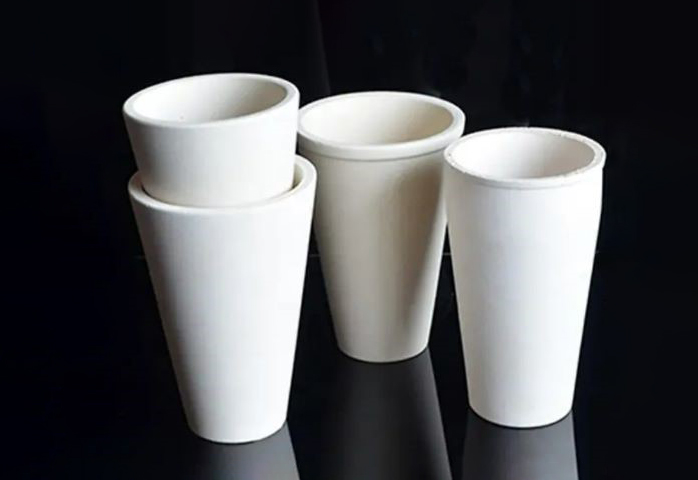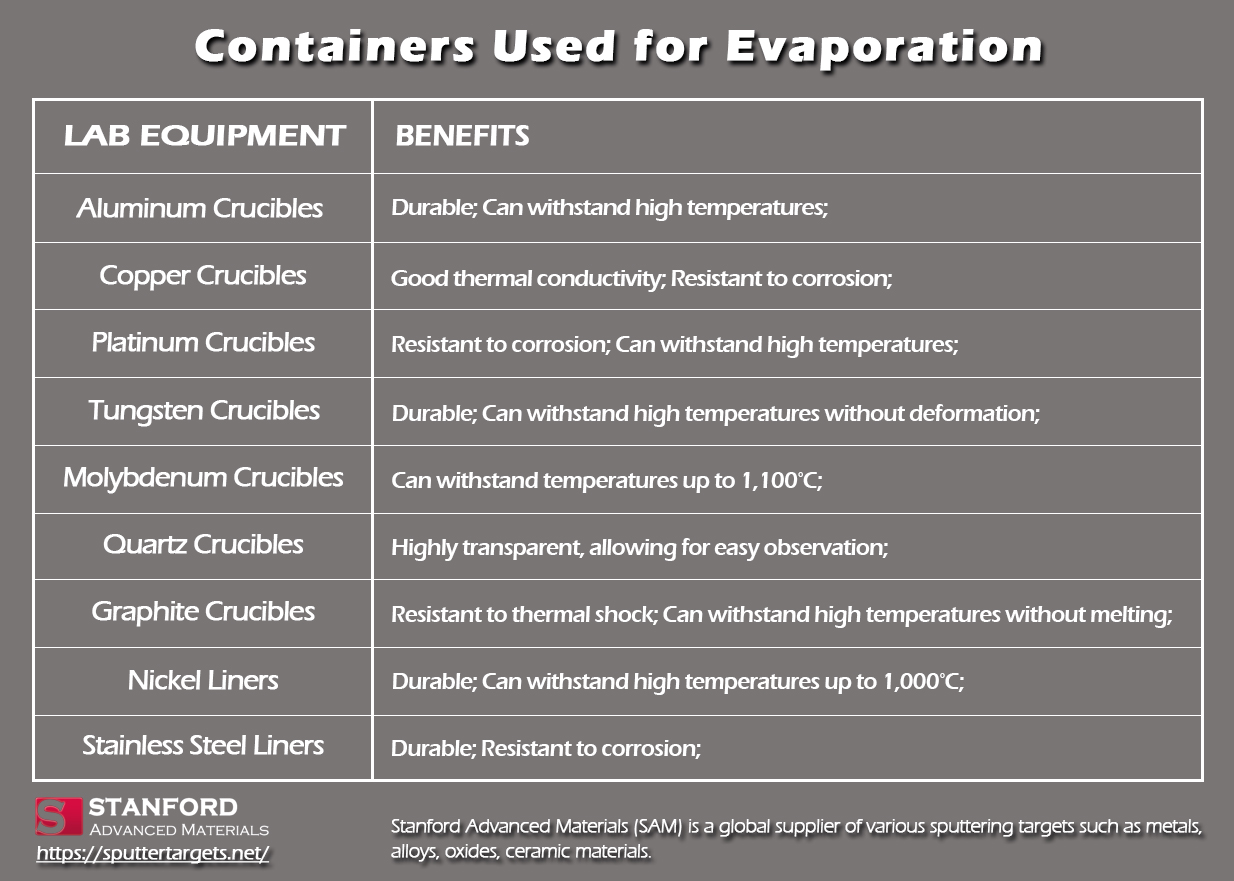Introduction
Maintaining the correct fill rate for evaporation materials is critical to achieving efficient and safe results in vacuum deposition processes. A fill rate that is too high can cause the material to spill over, potentially leading to electrical shorts and damage to the crucible. On the other hand, underfilling can result in an insufficient melt level, which may compromise the crucible’s structural integrity. To prevent these issues, experts, including Stanford Advanced Materials, recommend a fill rate of 65%-80%.
This article explores the significance of the recommended fill rate, provides best practices for achieving it, and highlights common pitfalls to avoid. Whether you’re a researcher in materials science or an industrial user in vacuum deposition, understanding and applying these principles is essential for optimal performance and equipment longevity.

Why Fill Rate Matters
A proper fill rate ensures the stability and efficiency of the evaporation process while protecting the crucible and equipment. Below, we delve into the consequences of deviations from the recommended range.
1. Consequences of Overfilling (Fill Rate > 80%)
- Material Spillage: Exceeding the 80% limit increases the likelihood of molten material spilling over the edges of the crucible. This can contaminate the vacuum chamber and damage sensitive components.
- Electrical Shorts: Spilled material may come into contact with electrical parts, posing a serious risk to the equipment’s operation.
- Crucible Damage: High levels of molten material generate uneven thermal stresses, which can lead to cracks or breaks in the crucible.
2. Effects of Underfilling (Fill Rate < 65%)
- Insufficient Melt Level: A low fill rate results in a melt level that is too shallow, failing to provide adequate thermal mass and uniform heating.
- Crucible Bottom Wall Breakage: Without enough material, the bottom of the crucible may overheat and become prone to cracking under repeated thermal cycles.
Best Practices for Achieving the Optimal Fill Rate
Achieving the correct fill rate for evaporation materials requires precision and adherence to best practices. Here’s a step-by-step guide to help ensure a safe and efficient process.
1. Measuring and Estimating the Fill Rate
- Know Your Crucible Dimensions: Determine the volume of the crucible liner and calculate the target volume for the material, ensuring it falls within 65%-80% of the total capacity. Further Reading: What Is the Proper Fill Rate of An E-Beam Crucible Liner?
- Material Density Considerations: Be aware of the material’s density, as this affects the volume-to-mass ratio. Adjust your loading to account for these properties.
- Visual Markers: Some operators mark the crucible liner at the 65% and 80% levels as visual guides during loading.

2. Filling Procedures
- Step 1: Initial Loading
Begin by loading the crucible liner with material to approximately 50% of its capacity. This helps establish an initial melt pool for stability. - Step 2: Pre-Melting
Heat the material until fully melted. This pre-melting step ensures uniform distribution and minimizes voids or uneven levels. - Step 3: Incremental Loading
Add material in small increments, allowing each batch to melt completely before adding more. Continue this process until the desired fill rate (65%-80%) is achieved. - Step 4: Final Check
Verify that the melt level aligns with your visual markers or calculations. Ensure the material remains below 80% of the crucible liner height.
3. Precautions During Loading
- Avoid Overloading: Never exceed the 80% mark, even if subsequent melts appear to reduce the level. Overloading introduces risks such as spillage and crucible damage.
- Ensure Even Melting: Stirring or other agitation techniques may be used in some setups to promote uniformity, but only if appropriate for the material and equipment.
- Prevent Contamination: Keep tools, liners, and materials clean to avoid introducing impurities into the melt.
Common Mistakes and How to Avoid Them
Even experienced operators can encounter challenges with fill rates. Here are some common errors and ways to mitigate them:
1. Overfilling the Crucible
- Error: Assuming the material will shrink significantly upon melting and compensating with an excessive initial load.
- Solution: Stick to the incremental loading method to achieve the optimal level without risking spillage.
2. Uneven Heating
- Error: Applying heat unevenly, leading to localized overheating or incomplete melting.
- Solution: Ensure your heating system is calibrated and capable of delivering consistent temperature across the crucible.
3. Ignoring Material Properties
- Error: Failing to account for the specific melting behavior and thermal expansion of the material.
- Solution: Familiarize yourself with the material’s properties and adjust loading and heating methods accordingly.
4. Insufficient Pre-Melt
- Error: Skipping the pre-melting step, which can lead to voids or a poorly mixed melt.
- Solution: Always pre-melt the material before topping off to achieve a uniform and stable melt.
Conclusion and Recommendations
Maintaining a fill rate of 65%-80% is a simple yet crucial practice in vacuum deposition processes. This range minimizes risks like spillage, electrical shorts, and crucible damage, while also ensuring efficient and uniform melting of the evaporation material.
By following best practices—such as incremental loading, pre-melting, and avoiding overfilling—operators can achieve consistent results while prolonging the life of their equipment. For further guidance and detailed specifications, visit trusted resources like Stanford Advanced Materials.
Proper attention to fill rates ensures a smooth and efficient deposition process, saving time and cost while ensuring safety and quality.




